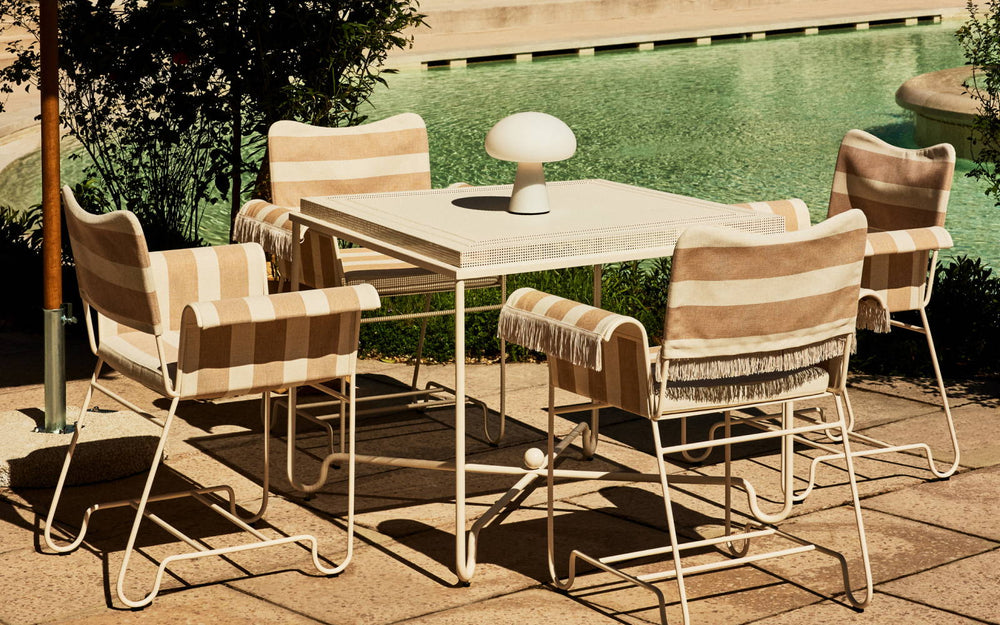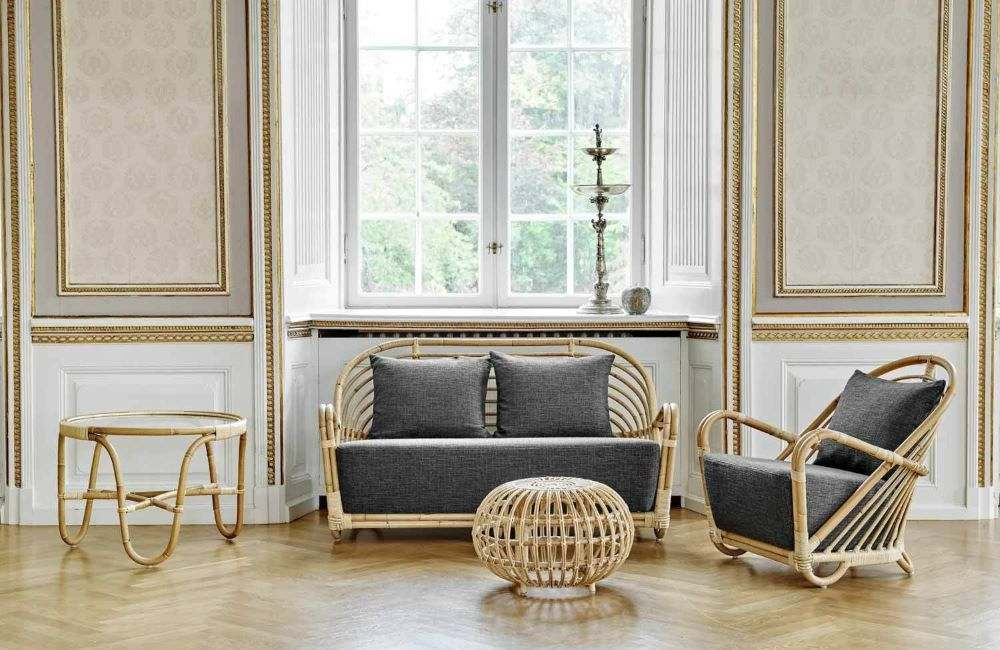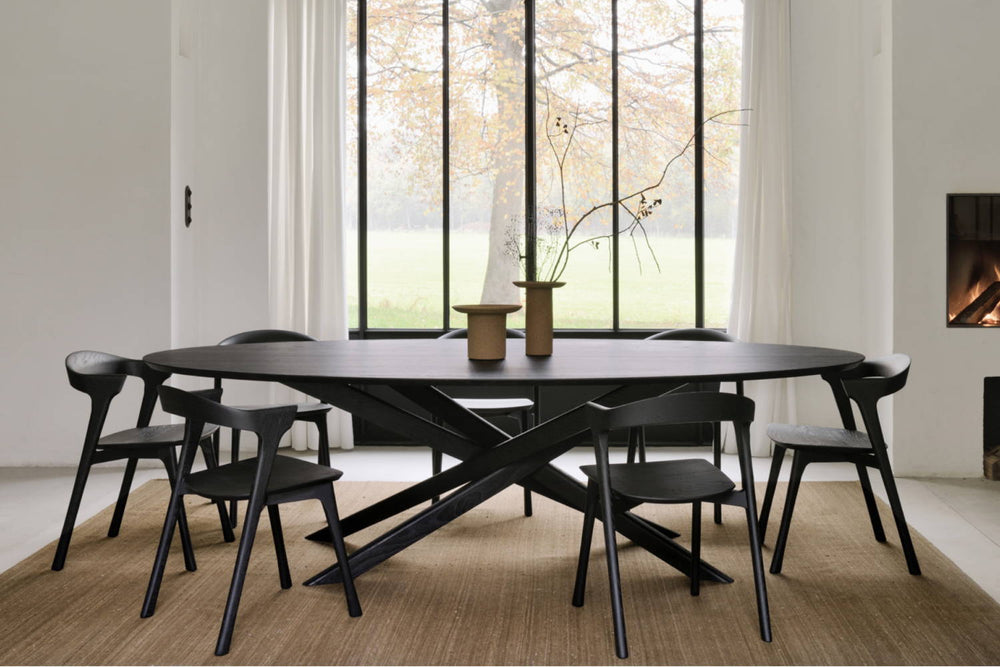While each offer similar sleek and refined characteristics, Contemporary and Scandinavian design styles both have their own unique qualities that set them apart, making them excellent aesthetics for updating a room or designing an entire home.
N701 Modular Sofa by Ethnicraft
Scandinavian Design, What Is It?
Scandinavian design can be summed up in three words: Simplicity, utility, and beauty. A design style hailing from the Nordic region of europe, a wide range of designers helped inspire the movement through values of durability, reliability, and functionality through the realization of simple forms. The belief that beauty, functionality, and comfort should be available to all remains at the core of Scandinavian design, with an emphasis being put on utilizing natural materials to improve daily life through unique, purposeful design.
Bok Round Extendable Dining Table by Ethnicraft
Scandinavian Design History
Emerging as early as the 1930s from the five major Nordic countries of Denmark, Finland, Norway, Sweden, and Iceland, Scandinavian design continued to flourish in the mid 1950s. Influenced by the German Bauhaus school, many designers combined ideas of simplicity and functionalism with innovative materials and construction methods to form influential and iconic designs that are still sought after to this day. By no means limited to furniture and decor, Scandinavian design has been applied to electronics, mobile phones, and cars.
Scandinavian Design Tips
AU NATURALE: Don’t shy away from wood walls, floors, and accents on furniture. Clean-lined naturally finished wood furniture is a staple in Scandinavian design.
ECO-FRIENDLY: Many Scandinavian brands incorporate eco-friendly practices and materials into their designs, this helps to elevate the beauty of your home and ensure a high-quality living experience.
FUNCTIONALITY: Scandinavian interior designs are crafted to be very livable. Multifunctional designs keep your streamlined while hidden storage ensures your space is clean and clutter-free.
KEEP THINGS SIMPLE: Scale back on accessories that may clutter your room and make your space feel cramped. Opt for only the necessities to accent your space.
Spindle Bed by Ethnicraft
Boxcar Coffee Table by Caracole
Contemporary Design, What Is It?
The designs of today, contemporary modern furniture refers to modern day furniture pieces that may include inspiration and designs from the modern furniture movement. Contemporary furniture design combines influences, trends, and innovative technologies without any strict adherence to a singular design philosophy. Streamlined for today’s tastes, contemporary furniture blends styles and periods for a more modern take on traditional composition..
Calista Side Chair by Bernhardt
Contemporary Design History
The contemporary design age in furniture began with the start of the 20th century. Several design styles that prompted the move from ornate, over the top designs to more sleek and streamlined ones include Art Nouveau, Art Deco, Bauhaus, International Modern, and High Tech. All developed as time passed and technology and material availability adapted to the current era. Building on form and function, more emphasis was put on machine-made, efficient production utilizing man-made materials in more modern ways.
Contemporary Design Tips
TEXTURE: Whether in furniture, pillows, blankets, or other decor –don’t be afraid to increase the comfort of your home with a touch of texture for lasting visual appeal.
MIXED MATERIALS: Contemporary spaces incorporate a variety of materials. A sleek metal dining table can be paired with curvy high-density plastic chairs for an eye-catching set-up.
CLEVER USE OF COLOR: Bathed in muted neutrals along with black and white, contemporary spaces always benefit from a bold punctuation of vibrant color for a bit of freshness.
CRISP LINES, SIMPLE SHAPES: Whether opting for more angular geometrics or soft and curvy shapes, when it comes to lines, they should always be strong and crisp. High ceilings, big windows, and bold color blocks can help to achieve this in contemporary spaces.
Dobson Bed by Four Hands
Afteroom Upholstered Dining Chair by Audo Copenhagen
What's the Difference?
While both styles have similarities, they offer unique differences that are inspired by their era and cultural idiosyncrasies. Scandinavian design is influenced by the beauty and simplicity of nature and the idea of less is more.
Inspired by the landscape of the countries in which the design movement was founded, Scandinavian design is beautiful, clean-lined and utilitarian while colors are often muted or focused on neutrals in white, beige, cream, brown, and black.
Contemporary design changes with each passing year, ever-changing with the design landscape with the innovation of ideas and materials. Contemporary design often incorporates more color, unexpected shapes, and man-made materials for a modern, sometimes futuristic feel.








